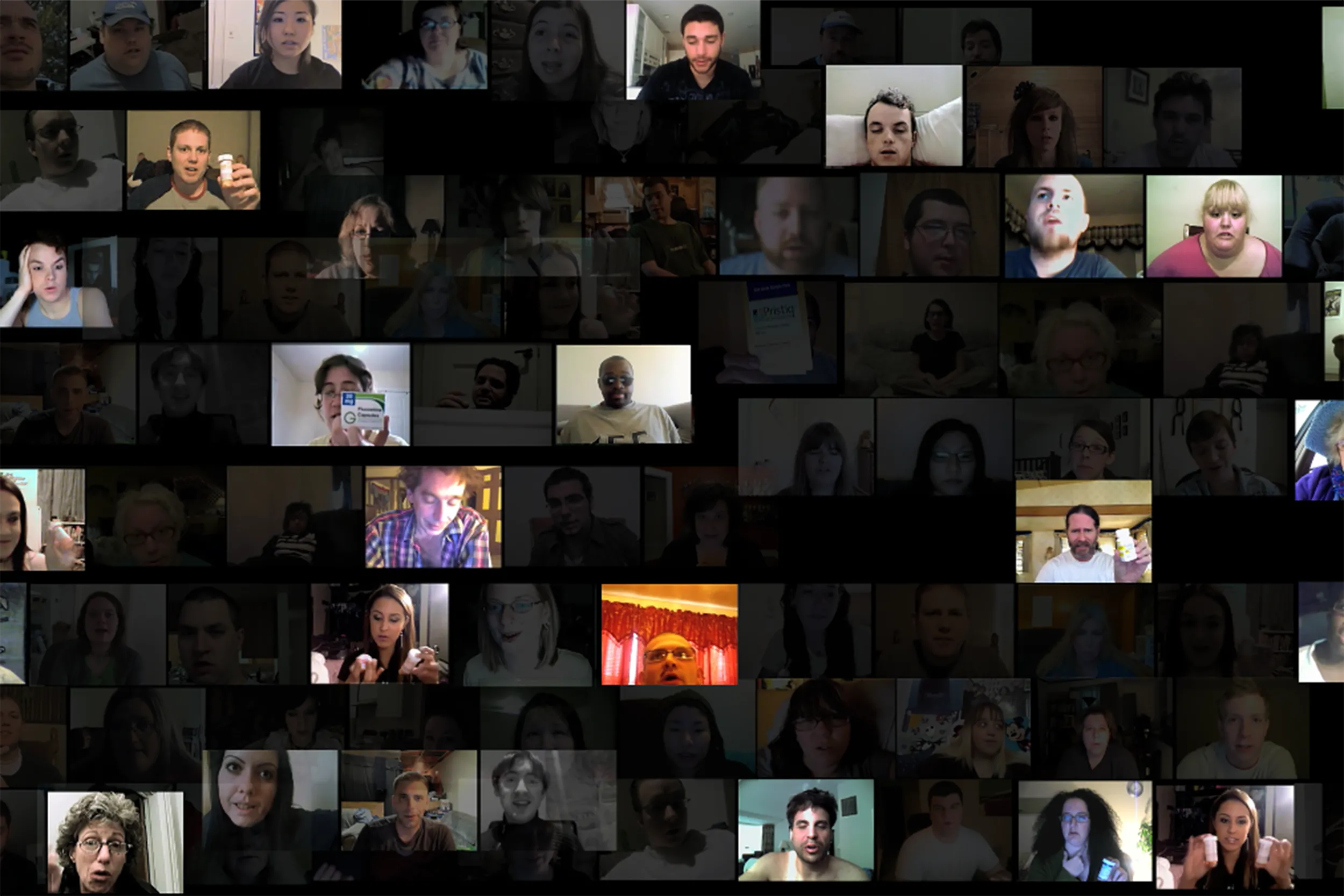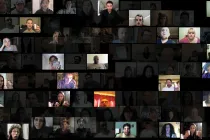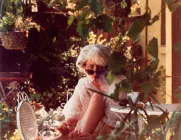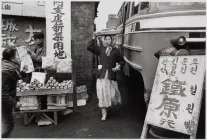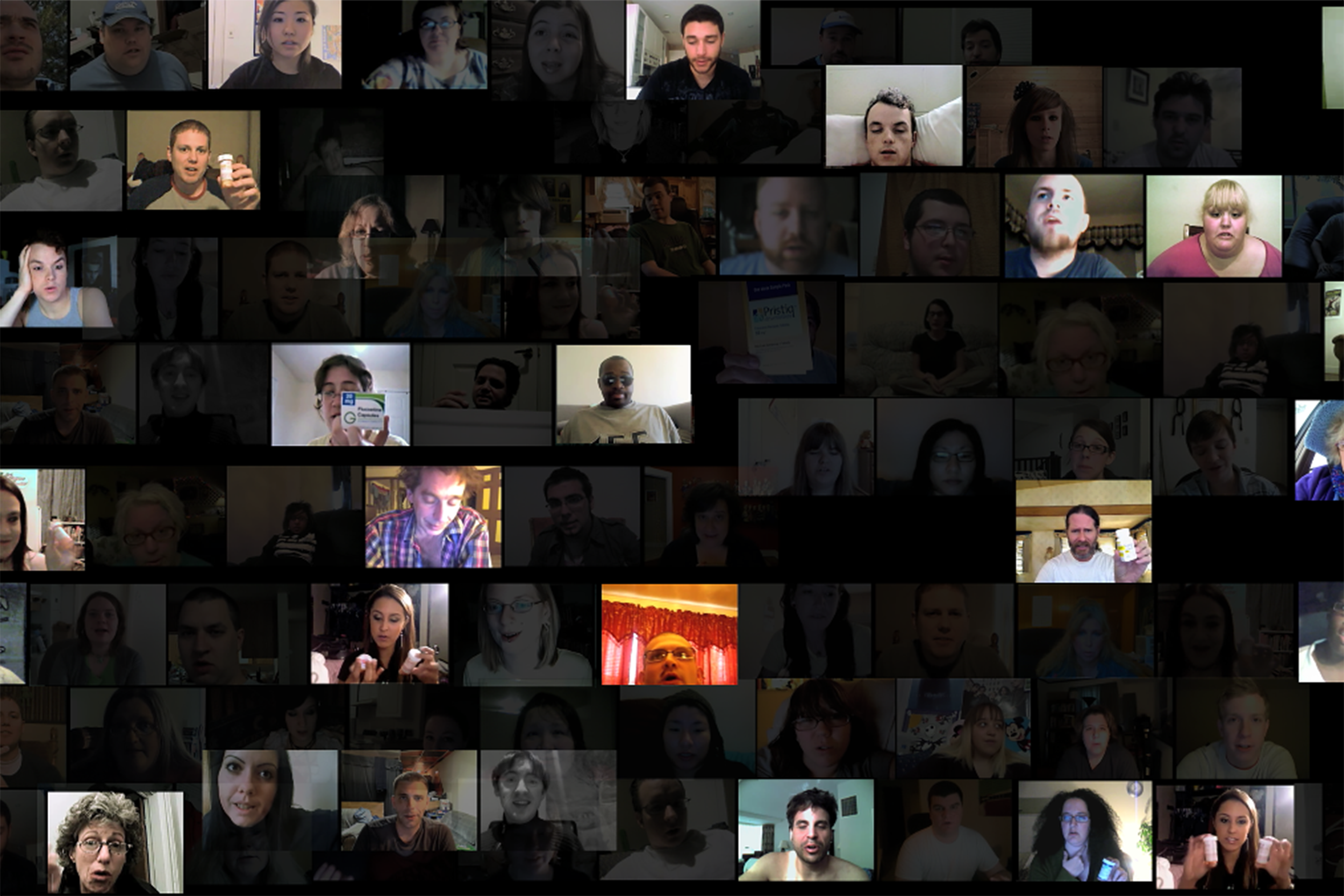
American artist Natalie Bookchin has long cast a critical eye at media, investigating the ways in which new forms of broadcasting and self-expression on the Internet serve as barometers to measure political attitudes, economic tendencies, and the evolution of the concept of self. In the last few years, Bookchin has created works in which she collages and choreographs found YouTube videos that skillfully examine the porous border between the self and the common, and between being and performing. In Mass Ornament (2009), the artist combined homemade videos of people dancing; in Testament (2009/16), included in Public, Private, Secret, she searched for common themes that people addressed in online video diaries; and in her most recent documentary film Long Story Short (2016), she gathered videos from over a hundred people in Los Angeles and the Bay Area discussing their experience of poverty. Not unlike photography, the works function as documents, constituting a cultural archive that records not only the protagonists and their individual and unified voices, but also the technical quality and file specifications that root them in a specific time period on the ever-changing technological continuum.
Paula Kupfer: Do you see many connections between traditional photography and your video work?
Natalie Bookchin: I think my video work makes lots of sense in a photo show. I come out of photography, although I haven’t worked in photography very much or even for many years. I took a few photography classes as an undergraduate and continued as a graduate student at the School of Art Institute of Chicago. For my entire twenty-five-year teaching career, until I moved to Rutgers two years ago, I have been situated within photography departments. Although I don’t make photographs anymore, the photographic is an essential element in my work, as I work with lens-based recordings of actuality that I find on social-media sites. I search in the video documents for poses, stances, and gestures.
Audio recordings are equally important—I listen, as much as I look, for tone, language, and word selections. I collect documents in which people perform for the camera, in both rehearsed and seemingly spontaneous ways. I look to these documents for what they might reveal something about who we, as a culture, think we are, and how we present ourselves outwards to the world as we perform in front of real and imagined viewers.
Just as a street photographer might go to the street to document people as they present themselves in public, I go to the Internet. The videos I collect are documents that reveal how people perform to the camera and present themselves in public, a few steps removed from the spontaneous, candid shot of the street photographer.
PK: I am curious about the progression from Mass Ornament (2009) to Testament (2009/16) to Long Story Short (2016). How did one inform the next?
NB: In Long Story Short, instead of looking online for what’s commonly shared, I produced a missing archive, one that didn’t appear to exist on social media. I went to food banks, adult literacy programs, and job training centers in Los Angeles and the Bay Area in Northern California and asked people to discuss and reflect on their experiences of poverty —how it feels, how they cope, and what they think should be done. I used the same forms—the webcam, the vlog, the amateur video—where people present themselves and their expertise to the world. My aim was to contrast this material and put it in conversation with contemporary social media, to reflect on the images and voices we usually see and those that are starkly absent.
PK: After working in a similar format on these works, what are you looking to next?
NB: My recent work has changed as online-video documents and their circulation have changed. These days, videos on social-media sites are increasingly commercial and polished. Not only do ads play between videos on YouTube, but the more raw, spontaneous, casually-staged videos are often buried beneath sponsored and more polished videos. Responding to this new reality, I have been gathering and working with scripted and rehearsed performances including Ted talks, and lectures and speeches by “success” coaches, entrepreneurs, and billionaire CEOs in combination with DIY how-to videos by people demonstrating expertise.
PK: How do ideas about the economy figure into your work? Where does the artist’s labor fit into the economy of the entrepreneur today?
NB: My work focuses on the shared self—its combination of private and public, scripted and authentic, empathetic and opportunistic. I explore elements and contractions of the pact between the self, the social, and the so-called sharing economy, and examine its forms and constraints. Putting the word “sharing” next to “economy” would have once been considered oxymoronic, but today sharing has been monetized. On Airbnb, we rent our homes; with Taskrabbit, we rent our labor; with Uber, we rent our cars; and on Facebook and YouTube, we rent our selves—our identities, our images, and our opinions.
A number of political theorists following Foucault, including Wendy Brown and Michel Feher, define neoliberalism as not only a set of economic tendencies that include a shriveled welfare state, free markets, privatization, and job insecurity, but also as a condition that presupposes a particular form of subjectivity. Under what they refer to as the neoliberal condition, human beings are redefined as human capital, and all aspects of existence are seen and understood in economic terms. Under this regime, the market has come to infiltrate all aspects of daily life and humans are seen as market actors who must invest in themselves as they participate in the marketplace of life. In the past, the model market player aimed to fit in and conform, but today it is the artists/entrepreneur who is poised to succeed and who has the potential to compete, by standing out from others, thinking differently, and being disruptive. Under this logic, artistic labor is the quintessential form of entrepreneurial labor.
This is quite a grim view of society, and in my work, I search for cracks and fissures, gaps in this oppressive logic of the market, instances of sharing that conflict with, interrupt, or make visible an otherwise seamless flow of the so-called market share.
PK: I’m curious to discuss performance. Your videos suggest that not performing is hardly an option anymore. Even when people are purportedly alone in a room, they’re there with a camera—the old-school picture frame is now the video screen, the camera lens. This exhibition, too, is so much about how we perform our identity, whether it’s in still images or in video. But at that same time, the way you overlap language points to the almost limited range of words that we use to express and perform.
NB: My videos try to make visible repeated and shared tropes and scripts that people perform and reenact as they present versions of themselves and their lives to the world through networked cameras. The videos can feel raw and spontaneous, but each one is also a performance. People frame themselves against unmade beds, in bathrooms, or in a car pointing cameras at themselves as they drive. There is an urgency to the activity of filming, a rushed quality, even a kind of desperateness. People often don't even bother to make the bed first. It seems to suggest such longing, for some kind of connection and to be seen and heard.
The strangeness of the activity is also in how common and repetitive each one is. People say similar things in similar ways. One video seems to beget another; people in other rooms, or in other car interiors, seem to repeat a similar script or series of gestures. By placing many videos sides by side, the cultural scripts—of language, of narrative, of gesture, and, ultimately, of identity—that people rehearse in spontaneous ways, start to emerge. The collection starts to reveal the reciting of shared scripts as both personal and habitual.
The contrast and contradictions between the scripted, the staged, the intimate, and the vulnerable, together with the witnessing of raw desire, is what makes the video document so strange and compelling to me. The imperfections in performances and in the forms themselves can allow for a texture of humanity, vulnerability—maybe something similar to Roland Barthes’s punctum, to sometimes be seen and felt.
PK: The video format seems to offer more freedom than the frozen image. If we think about the way selfies are performed—it’s a very different attitude towards the camera than these videos.
NB: The selfie feels suffocating compared to a video blog. It more easily flattens a person, turning her or him into a cartoon character. What attracts me to the videos are the small details that sometimes appear beyond a mannered pose or a repeated phrase. It can appear in time, sometimes in a glance, but not in the frozen moment of the selfie.
PK: Why did you call this work Testament?
NB: Vlogs can function as a kind of testimonial or confessionary, of the self to the world.
PK: When you think about confession, do you think about religion? Does the work invoke spirituality? Or the idea that our religion is the Internet?
NB: No, it’s the camera! People confess to a networked camera. As they look out to an imagined audience, they also look at themselves on the screen. It’s a kind of confession to the self, and at the same time, to the world of potentially millions of future viewers. It’s such a strange thing that it’s all of those things at once! It’s both confessing to the mirror, or dancing to the mirror, and dancing to the self, and also dancing to the potential, limitless audience.
When I started making work with found online videos, Youtube hadn’t been around that long. DIY videos from those days were often raw. Not just poor quality and low resolution, but also the vloggers themselves and their production was much less polished than many are today. Today, people have the possibility of making money off their Youtube channels. As a result many vlogs have higher production values, and individual channels often have commercial sponsorship. In the early days, it wasn’t entirely clear how the platform was going to be monetized, either for Google (who bought Youtube in 2006, a year after it was launched) or for its participants, who freely provided its content.
PK: Was there one instance or one confessional video that made you want to work with them as source material? Or was it just a natural transition from the dancing in Mass Ornament?
NB: I wanted to move from the contagious physical gestures of Mass Ornament to language, to look at how ideas, words, and phrases circulate and become viral. I was interested in choreographing language in the way that I had choreographed movement.
PK: In looking at so many videos, did you identify any patterns? It’s such a specific anthropological, twenty-first-century kind of investigation.
NB: I began to notice how people were performing not just language and phrases but identity itself, including racial and gendered identity. In Now He’s Out in Public and Everyone Can See (2012), I focus particularly on conflicted performances of racial identity.
PK: You said people performed a gender or race. Both of these categories are at the center of cultural conversations today. How do you read this flexible performativity? How did you realize this flexibility afforded by performance?
NB: In Mass Ornament, I edited together repeated examples of dance moves, some of which were associated with idealized femininity, but were being performed and interpreted by a range of types of bodies and genders. In Now He’s Out in Public and Everyone Can See, vloggers narrate a series of media scandals involving unnamed African American celebrities. The vloggers repeat familiar racist and racialized tropes associated with blackness—specifically black, male identity. They describe and evaluate the men in question, their masculinity, their racial authenticity, their private lives, and their moral codes. The montage depicts race and gender as continually reconstructed through expressions of collective spoken language. There is heated emotion and rage in the vloggers’ performances, suggesting just how much is at stake in these words and their public articulation.
PK: And it also uses the theatrical device of the chorus, which can hover in the background, or come to the foreground—
NB: It’s a particular kind of chorus. Now that I am becoming well versed in this, I’m looking back at works like Mass Ornament and Testament, and thinking about the way it both reiterates this kind of self-branding and self-performance where there’s never an erasure of the individual: In Testament, there can be something hopeful and unifying about seeing and hearing a chorus of speakers sharing similar sentiments and revealing commonalities. Yet, at the same time, people are alone—isolated—in their rooms, in their video frames, and in front of their individual screens, talking to themselves.
In Now He’s Out in Public and Everyone Can See, when vloggers appear to speak together in concert, it can feel more like a mob than a collective, each charging or judging an unseen and composite black, male celebrity who apparently has (as one vlogger says) has stepped out of line.
PK: And Mass Ornament is often discussed in the context of the 1920s and 30s when the idea of the common was at the forefront.
NB: I made the piece during the 2008 financial crisis and wanted to contrast the 1930s depression to the recession of 2008. In 2008, more people worked from home, in temporary and freelance jobs. I was reflecting on post-Fordist labor, a different mode of work from factory work, where people gathered together en masse, to freelance, temporary, and private labor, as well as free labor done in the name of individuality and self-expression online. It is a different understanding of labor, but it’s work all the same, even though those getting paid were the platforms (Google and Facebook) not the individuals.
PK: Did anyone whose videos you used ever contact you?
NB: Yes. After I made Testament and Laid Off, I posted the video as a “video response” to some of the videos I had used. Surprisingly, only a few people responded, although those that did were pleased about being included. With Now He’s Out in Public and Everyone Can See, a screengrab of one of the narrators was published in the LA Times before the show opened and found its way to a person depicted who enthusiastically posted the clipping on his blog.
But in terms of the question of privacy, I think about the Internet as a space similar to the street, in the sense that you can photograph people in the street because they’re in public. I try not to use anything that people wouldn’t want to see of themselves but I also think there’s free rein because it’s become a kind of a public space.
PK: Are you concerned about the longevity of these video works? Photography seems to always be at the center of such conversations: Is photography dead? Is the image outdated? And yet, there are more photographers than ever. How do you see the dynamic playing out with video?
NB: I am creating an archive of a particular moment in time. I find beauty in their materiality, in their pixilation, in the “bad” lighting, and in how it locates them in a particular historical moment and technological regime.
My work preserves something that would otherwise be lost or buried. You can’t find those videos online anymore because what rises to the top are the Drake videos, or whatever is most popular at any time. Google’s algorithms favor the popular. The rest sink to the bottom of the database. I rescue the unloved, unseen, and unwanted videos from the dustbin of history.
Paula Kupfer is a writer and editor based in New York. She is currently working on her art history master’s thesis on photography in 1950s São Paulo. Previously, she was managing editor of Aperture magazine.
This interview was originally published on publicprivatesecret.org on June 20, 2016.


